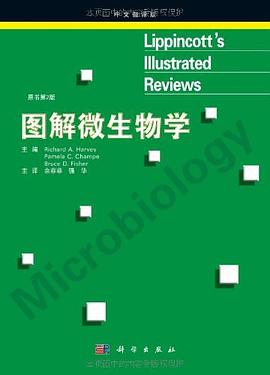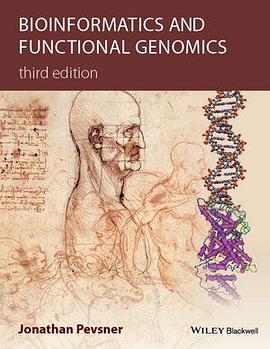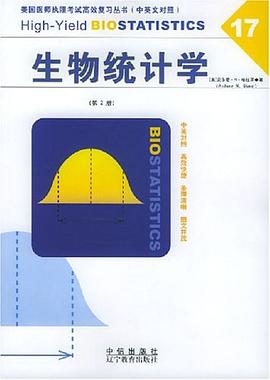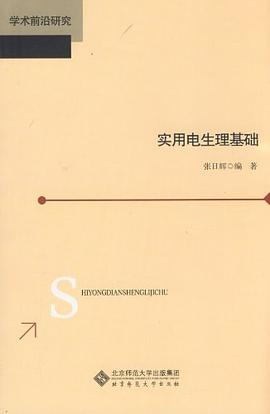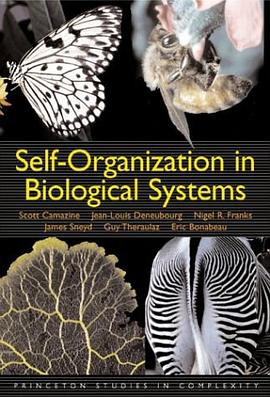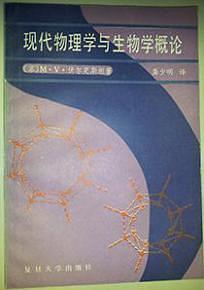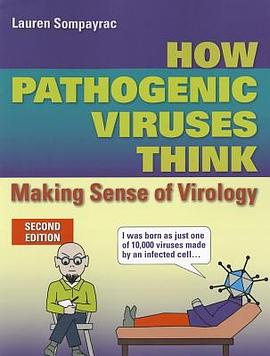
How Pathogenic Viruses Think 2e pdf epub mobi txt 電子書 下載2025
- 病毒學
- 生物學
- 通俗
- 美國
- 專著
- l
- Virology
- 病毒學
- 病原學
- 病毒思維
- 免疫學
- 分子生物學
- 病毒感染
- 醫學
- 生物學
- 微生物學
- 流行病學

具體描述
Over the past decade, the amount of data on viruses has grown dramatically. How can a virology student possibly make sense of all this information? In How Pathogenic Viruses Think, Second Edition, Dr. Sompayrac introduces an "organizing principle" - a paradigm to use to cut through all the details and focus on what's important. He demonstrates the use of this paradigm by "interviewing" twelve medically important viruses. During these interviews, each virus is encouraged to disclose not only what it does, but why it does it. And when a "talking virus" reveals its secrets, they are hard to forget! How Pathogenic Viruses Think covers the essential elements of virus-host interactions with descriptive graphics, helpful mnemonic tactics for retaining the information, and brief reviews of important concepts. It is an ideal book to help medical, science, and nursing students make sense of this complex subject. Example: Interviewer: I always ask the viruses I interview, "How do you attack your hosts, and why have you chosen that route?" Flu Virus: I favor the respiratory route. Interviewer: Okay, but why? For example, why not enter via the digestive tract? Flu Virus: Are you kidding me? Do I look like a dumb virus to you? My Uncle Harold tried the digestive tract once, and got as far as the stomach before the acid in there ate him alive! Not me. I take the easy way in. The respiratory route of infection provides direct access to my favorite target cells - the epithelial cells which line the human airway.
著者簡介
Lauren Sompayrac, PhD-Retired Professor, University of Colorado, Boulder, Colorado
PDr. Lauren Sompayrac was born in Jacksonville, Florida, on September 4, 1941. He attended the Massachusetts Institute of Technology and received a B.S. degree in physics in 1963, and a Ph.D. degree in elementary particle physics in 1969. After two years of postdoctoral research in particle physics, he moved to Copenhagen where he was a Postdoctoral Fellow for two years at the Microbiology Institute. Returning to the United States in 1973, he was a Postdoctoral Fellow in the Department of Pathology at the Harvard Medical School where he studied tumor viruses. In 1976, he moved to the Department of Molecular, Cellular, and Developmental Biology at the University of Colorado to continue his work on tumor viruses, eventually rising to the rank of Research Professor before his retirement in 1998. In retirement, he writes science books, and is the author of How the Immune System Works, published by Blackwell Science in 1999, and How Pathogenic Viruses Work, published by Jones and Bartlett in 2001.
圖書目錄
1 The Organizing Principle
2 Host Defenses
3 The Interferon Defense System
Part II The Bug Parade
Viruses We Inhale
4 Influenza: A “Bait-and-Switch” Virus
5 Rhinovirus: A Virus That Surrenders
6 Measles: A “Trojan-Horse” Virus
Viruses We Eat
7 Rotavirus: An Undercover Virus
8 Adenovirus: A Virus with a Time Limit
9 Hepatitis A: A Virus That Detours
Viruses We Get From Mom
10 Hepatitis B: A Decoy Virus
11 Hepatitis C Virus: An Escape Artist
12 HTLV-I: A Tribal Virus
Viruses We Get By Intimate Physical Contact
13 HIV-1: An Urban Virus
14 Herpes Simplex: A Virus That Hides
15 Human Papillomavirus: A Very Quiet Virus
Part III Beyond the Bug Parade
16 Emerging Viruses
17 Virus-Associated Cancer
18 Vaccines
19 Antiviral Drugs
· · · · · · (收起)
讀後感
本书以生动的语言、幽默的表述,用“演讲”方式,对人们最感兴趣的病毒进行了阐述,突出重点概念,使读者真正做到享受学习病毒学的乐趣。很专业的一本书追逐病毒的传奇之旅,带领你走过致命病毒的世界,揭开了第四级病毒的真相,籍此了解SARS、高致病性禽流感的传播和防控举措...
評分·每一个病毒都必须面临并解决的三个问题:复制、传播、避防 一、如何在人体细胞内复制 1.复制遗传信息 2.产生mRNA以编码相关的病毒蛋白 二、如何向一个新的人体宿主传播 易感染较大的器官,如呼吸道表面积大于一个网球场,肝脏具有大约一万亿个细胞,病毒可以杀死或损伤许多细...
評分本书以生动的语言、幽默的表述,用“演讲”方式,对人们最感兴趣的病毒进行了阐述,突出重点概念,使读者真正做到享受学习病毒学的乐趣。很专业的一本书追逐病毒的传奇之旅,带领你走过致命病毒的世界,揭开了第四级病毒的真相,籍此了解SARS、高致病性禽流感的传播和防控举措...
評分今年年前看的这本书,虽然不是医学专业的,生物知识也就仅限于高中的那一点,但愣是毫不费力的看完了这本书,顺便把高中所学的哪些胞嘧啶啊这些又温习了一遍,还勾起了不上高3那年的回忆,呵呵,跑题了。 本来开始以为这本书比较难度,其实不然,本书按照病毒的传播,复制等特...
評分·每一个病毒都必须面临并解决的三个问题:复制、传播、避防 一、如何在人体细胞内复制 1.复制遗传信息 2.产生mRNA以编码相关的病毒蛋白 二、如何向一个新的人体宿主传播 易感染较大的器官,如呼吸道表面积大于一个网球场,肝脏具有大约一万亿个细胞,病毒可以杀死或损伤许多细...
用戶評價
原來是 病毒學概論的作者,我說內容差不多,連配圖都是
评分“老牌”、“正統”,非專業人士病毒學入門首選。
评分“老牌”、“正統”,非專業人士病毒學入門首選。
评分原來是 病毒學概論的作者,我說內容差不多,連配圖都是
评分“老牌”、“正統”,非專業人士病毒學入門首選。
相關圖書
本站所有內容均為互聯網搜索引擎提供的公開搜索信息,本站不存儲任何數據與內容,任何內容與數據均與本站無關,如有需要請聯繫相關搜索引擎包括但不限於百度,google,bing,sogou 等
© 2025 book.quotespace.org All Rights Reserved. 小美書屋 版权所有

